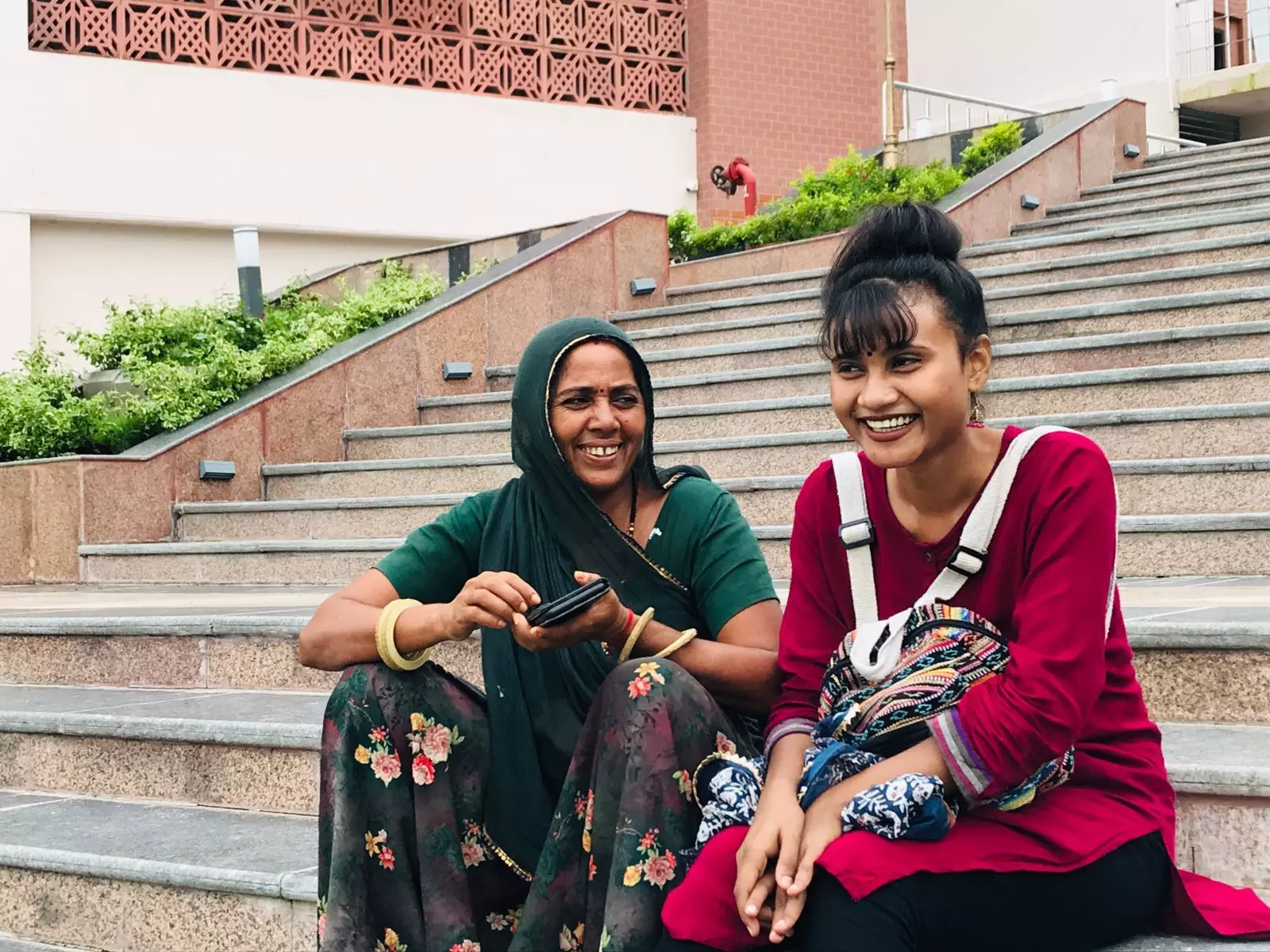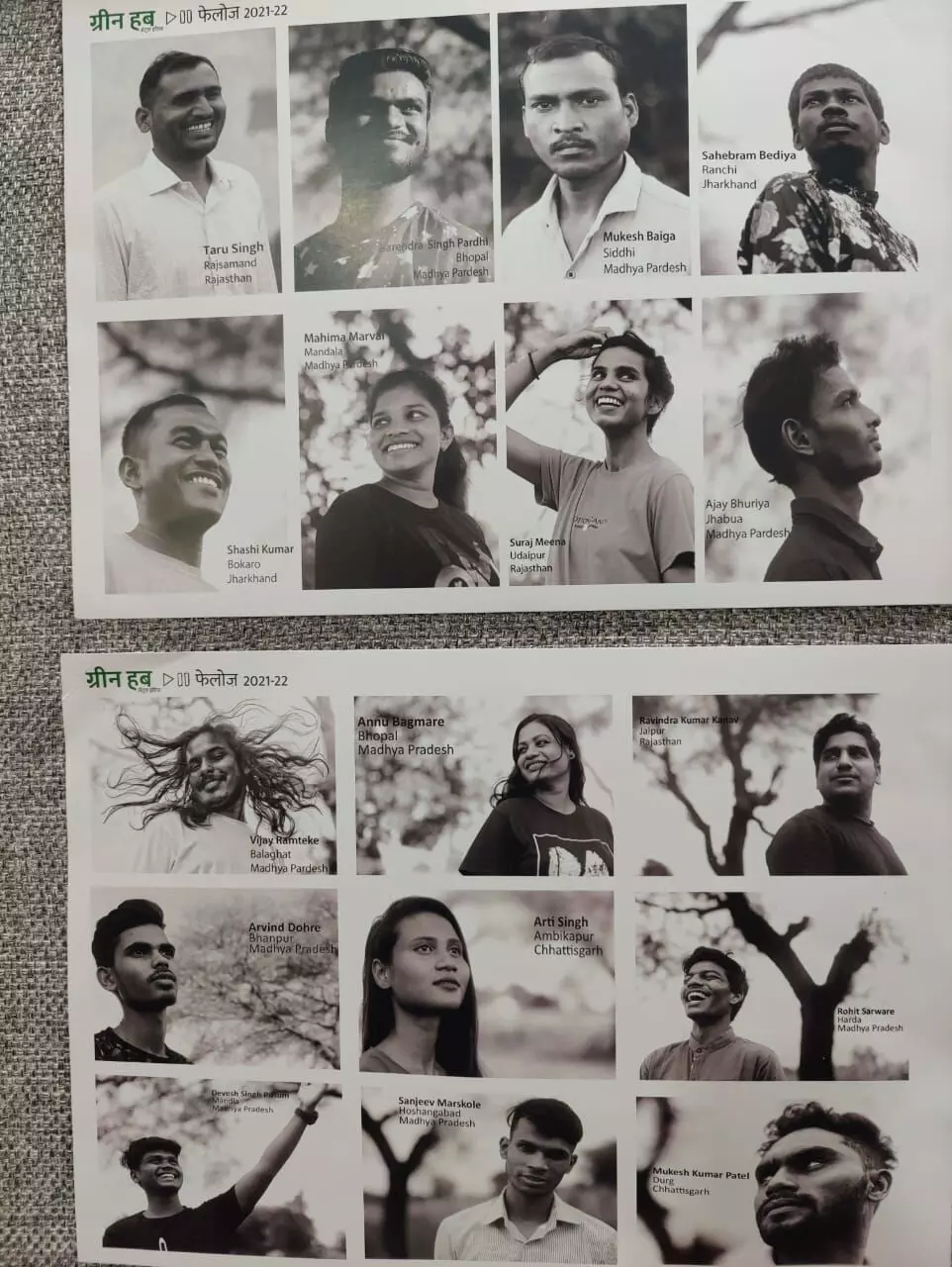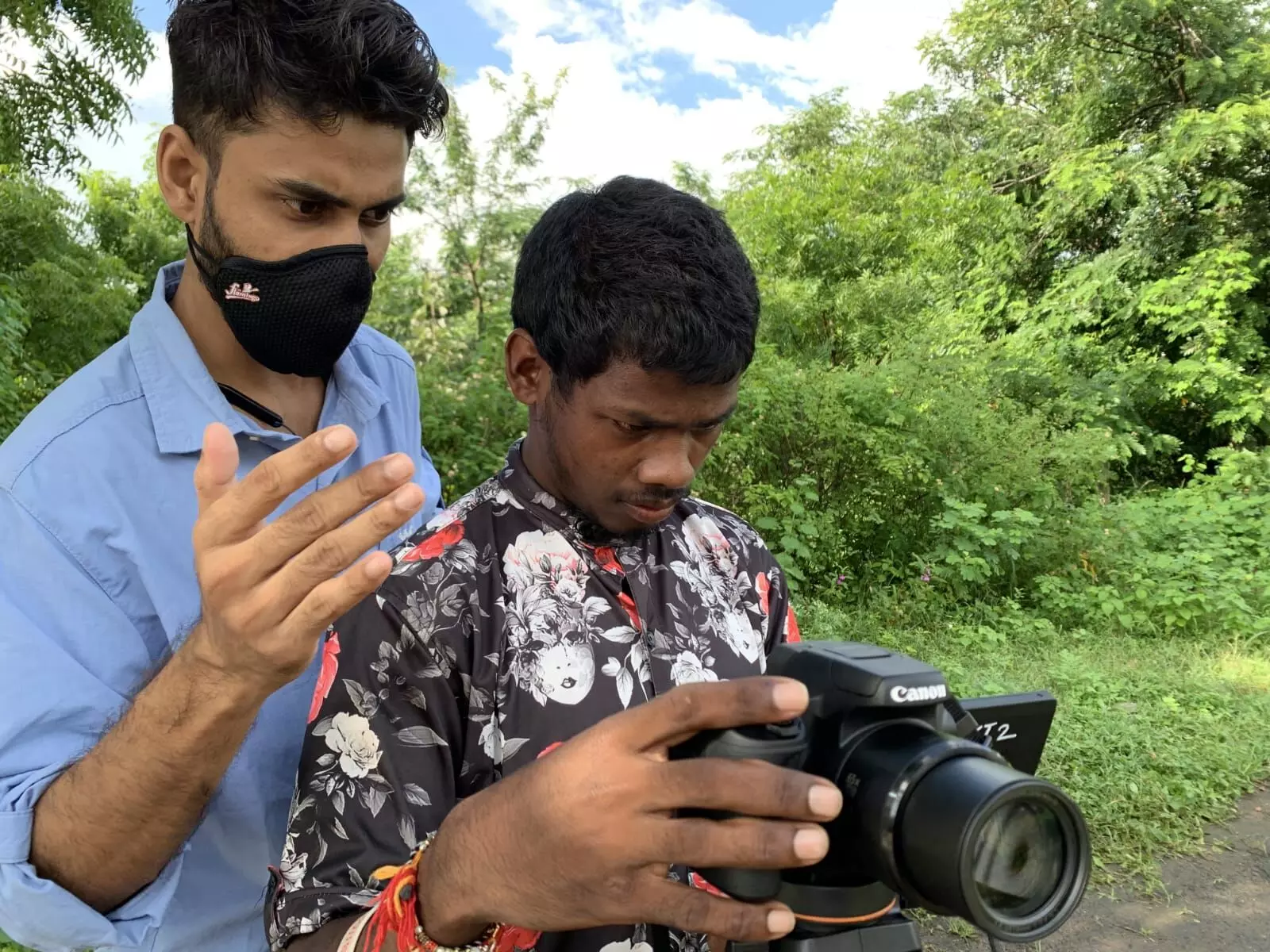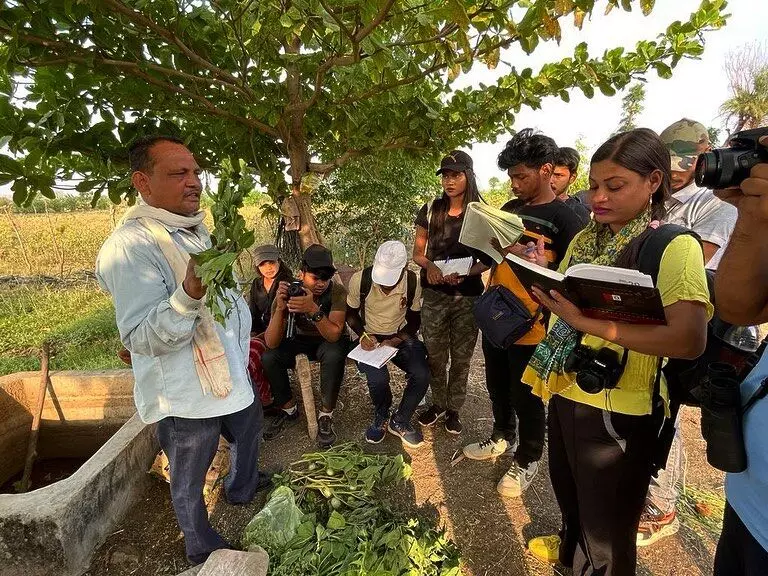Bhopal, Madhya Pradesh
Mukesh Baiga is an organic farmer who lives in Chingwah village in the middle of the Sanjay-Dubri National Park in Sidhi district, Madhya Pradesh. Belonging to the Baiga adivasi community, 39-year-old Mukesh was always fond of writing and his love of words led to him composing poems and essays.
A farmer himself, Mukesh underwent training in organic farming organised by the Bharat Rural Livelihoods Foundation (BRLF) in Chinghwa village in 2018-19, and he began to write about his experiences in organic farming. BRLF is an independent society under the Ministry of Rural Development.
“But, I realised that not many of my fellow villagers could read and I could not reach them with my words,” Mukesh, who now trains other farmers in organic farming techniques, told Gaon Connection.
Watch video
It was then that he learnt of the Green Hub Central India fellowship. The 10-month-long fellowship, which is open to rural and tribal people, involves learning technical aspects of filming, editing, and telling stories from remote tribal areas and those of the marginalised communities.
Mukesh successfully completed this fellowship and made a film – Bori Mein Lagai, Hazaron Kamai (Livelihoods in a Sack) – about the Jawahar technique of farming. His film, along with that of 16 other fellows, was recently screened during the Green Hub Central India (GHCI) Festival held in Bhopal on July 16-17.

Fellows with certificate. On July 16 and 17, at the Green Hub Central India Mahotsav held in Bhopal, documentaries made by adivasi youth were screened.
Arti Singh from Ambikapur in Chhattisgarh is also a Green Hub Central India Fellow like Mukesh. Belonging to an adivasi community, 21-year-old Arti has made not one but two films and both were screened at the GHCI festival.
Arti’s first film titled Kisan Hoon Nidar Hoon (I am a farmer and I am fearless) is on Saguni Devi, a woman farmer living in Ajmer district of Rajasthan. Her second film – Pahadi Korba – documents wedding rituals of the Pahadi Korba tribe, a particularly vulnerable tribal group (PVTG), in Surguja district in Chhattisgarh.
“I always wanted to do something to present the culture, traditions, the typical problems, etc., of adivasis, but I had no idea how I could do that,” Arti told Gaon Connection. She came to know about the fellowship through Chaupal, a voluntary organisation based in Chhattisgarh that works with tribal communities. “Being an adivasi myself, I was selected for this fellowship and it gave me an opportunity I was looking for to tell my story in the most impactful way,” she added.
Also Read: Rich lands and poor Adivasis – how to address this inherent contradiction in tribal areas

Arti’s first film titled Kisan Hoon Nidar Hoon is on Saguni Devi (left), a woman farmer living in Ajmer district of Rajasthan. Photo: Nidhi Jamwal
Green Hub Central India Fellowship
The Green Hub Central India Fellowship, the brainchild of Dusty Foot Foundation, and supported by BRLF, was announced last year and had 17 fellows from rural and tribal areas complete it. Mahashakti Seva Kendra, another non-profit based in Bhopal that conducts skill development workshops for women to improve their livelihoods, is a part of the initiative.
The fellows for the programme hail from four states of central India with high tribal population – Madhya Pradesh, Rajasthan, Jharkhand and Chhattisgarh. The programme, led by noted wildlife film-maker and founder of Dusty Foot Rita Banerji, trained young people belonging to the Gond, Baiga, Bhil, Bediya Pardhi and other adivasi tribes in making documentaries.
“I felt proud as I watched the films they had made that were about forests, water resources, land and social justice. Bio-diversity is closely linked with adivasi communities,” said Banerji. Green Hub Fellows are envisioned to be catalysts of positive change, amplifying the idea of ecological security as the bedrock of a sustainable future.

This was the first batch of 17 adivasi youth who successfully completed the GHCI course. Photo: Nidhi Jamwal
The documentaries screened at Bhopal were on topics ranging from environment, agriculture, traditional knowledge, farming techniques, and issues that are close to adivasi communities. This was the first batch of 17 adivasi youth who successfully completed the GHCI course. For the next 2022-23 batch, there are 27 adivasi and rural youth enrolled, informed Banerji.
The chief guest at the screening of the documentaries, Pramathesh Ambasta, the CEO of BLRF said that dwindling of the natural resources was an unavoidable truth that faced the world today. “The adivasi youth of central India are especially bearing the brunt of the ecological damage and their lives and livelihoods are gravely impacted,” he said. “GHCI has presented these young people a platform to reflect on and start conversations and dialogues about the issues their communities face,” Ambasta pointed out.
Changing lives through documentaries
Narendra Pardhi, who belongs to the denotified Pardhi tribe, is also a Green Hub Central India Fellow. He made two films – Gaj Dhoond Rahe Galiyara (along with another fellow Sahebram), and Umariya, Ecotourism Site (along with fellow Vijay Ramteke).

Young people belonging to the Gond, Baiga, Bhil, Bediya Pardhi and other adivasi tribes were trained in making documentaries.
“Each of us got a stipend of five thousand rupees a month, paid by Dusty Foot Foundation,” 23-year-old Narendra, told Gaon Connection. “This fellowship has been a life-changing experience for me as my Pardhi community is looked upon as a ‘criminal’ tribe and viewed with suspicion. Learning film-making has been a liberating experience for me,” he added.
Somewhat similar has been the experience of Mukesh Baiga. “Through my film, I can now raise more awareness about organic farming in the villages,” he said. “My documentary – Bori Mein Lagai Hazaron Kamai – shows how using this technique, crops can be cultivated in grow bags. It is a less expensive method of cultivation, uses less water and needs no chemical inputs at all,” he explained.
Also Read: ‘Words have their own burden but art is fluid’

The 10-month-long fellowship, which is open to rural and tribal people, involves learning technical aspects of filming, editing, and telling stories from remote tribal areas.
According to Arti, the fellowship taught them all about film direction, production, storytelling and writing in the course of the 10-month programme.
“I think films are the most impactful medium of communication that can reach, inform and educate people visually and rope them into conversations and discussions,” she continued.
Arti said that the adivasi youth were custodians of the environment and the wellbeing of their own communities, both of which needed protecting and nurturing. “Green Hub works for safeguarding the environment and the adivasis live close to jal, jungle jameen (water, forests and land). The environment and the adivasis share a symbiotic relationship. And, along with the natural environment, even the identity of the adivasis is facing the threat of extinction,” she said.
The GHCI Festival in Bhopal was also attended by Padma Shri GN Devy, who is known for the People’s Linguistic Survey of India and the Adivasi Academy created by him. “The world wants to hear the stories of adivasi communities being told by the adivasis and Green Hub has made it happen in a powerful way through the films the students have made,” he said during his inaugural address.


















